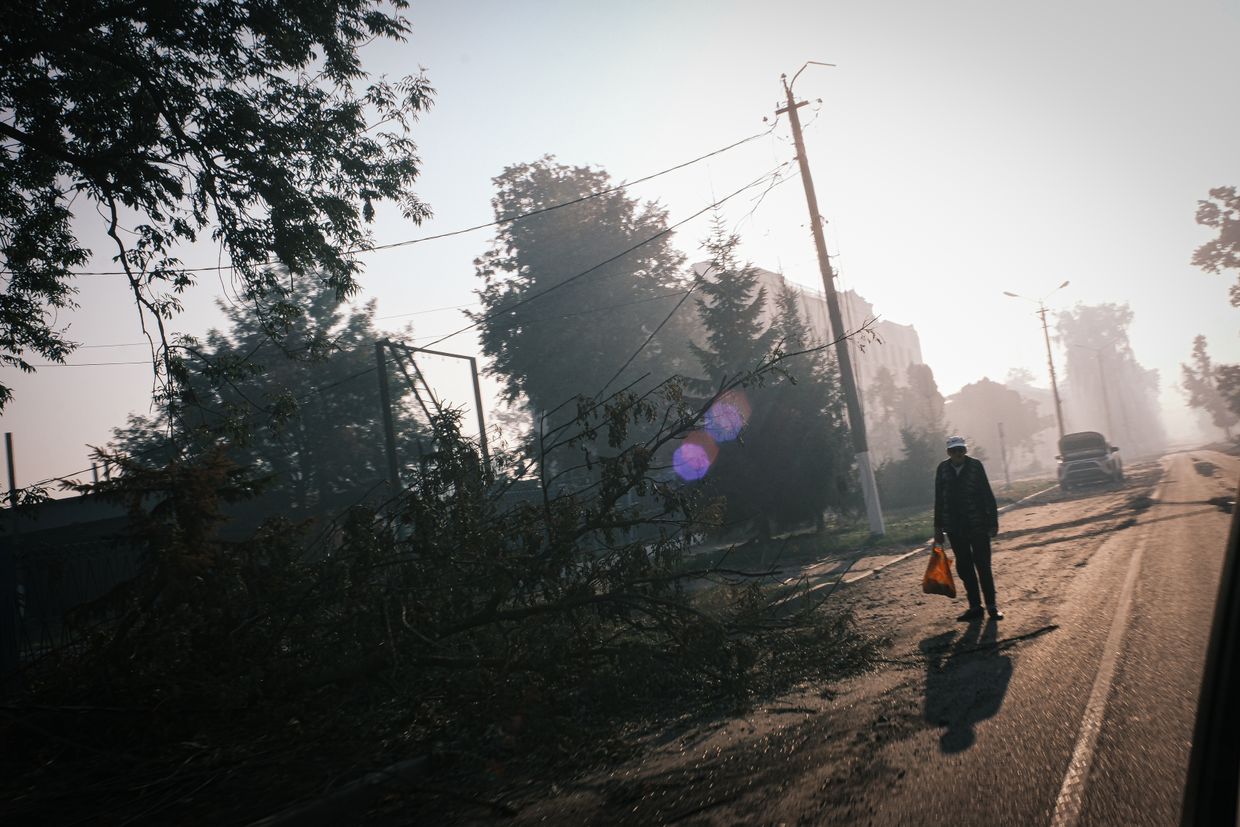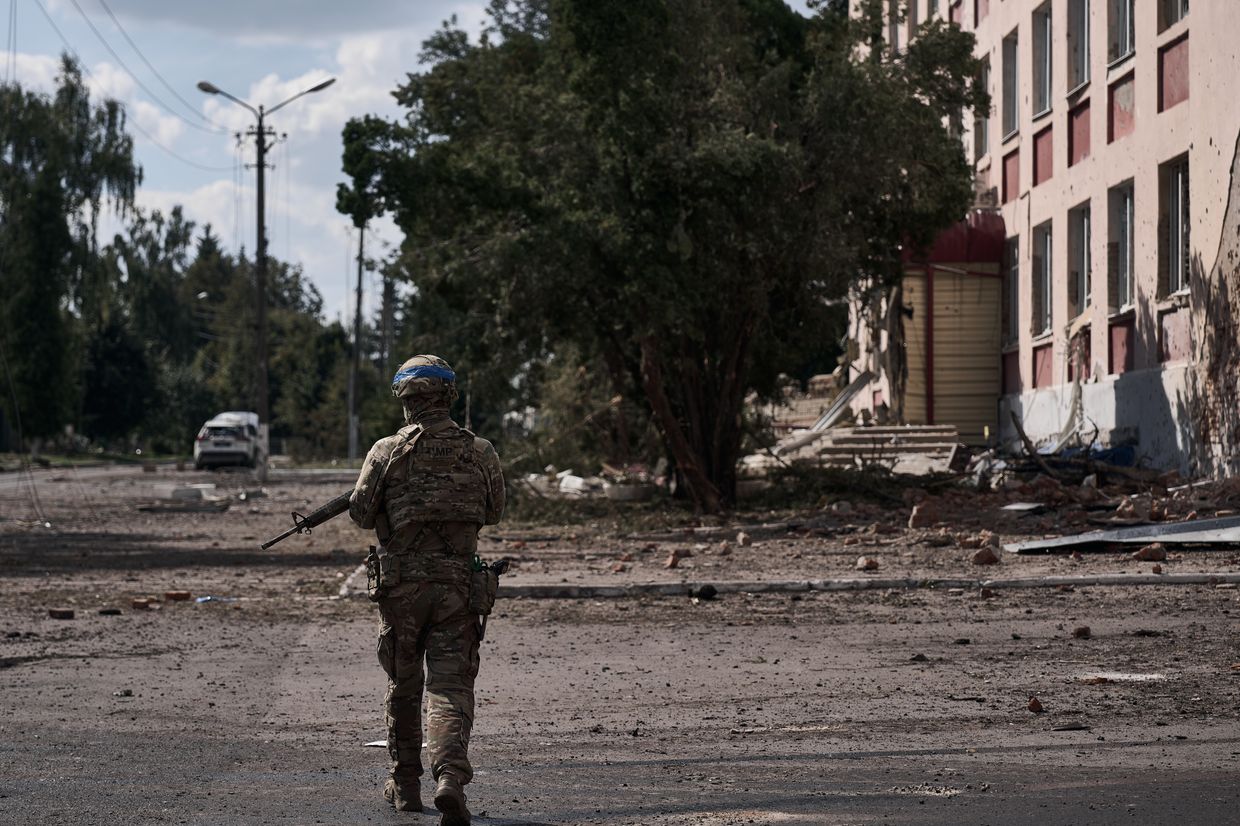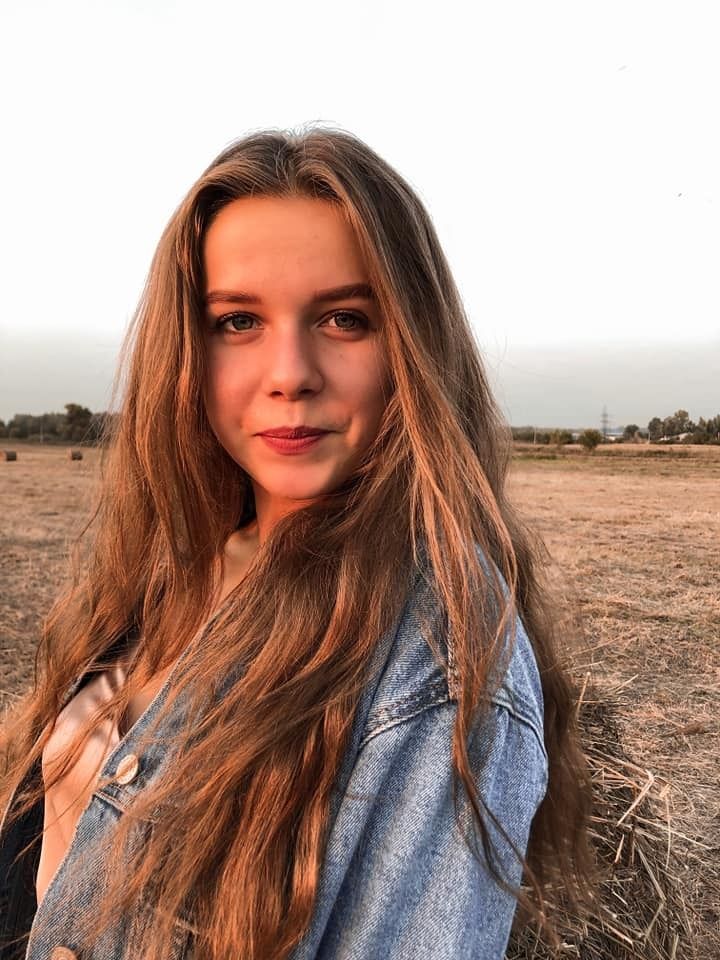Ukraine is continuing to successfully use terrain to advance in Kursk Oblast, three weeks into the operation. A number of Russian troops are now cut off by Ukraine's target attacks on key bridges in Kursk Oblast.
They are at risk of becoming prisoners of war (POWs) if they cannot be evacuated soon, experts have told the Kyiv Independent.
The loss of the crossings across the Seim River presents a serious challenge to Russian troops stationed in the Glushkovsky district, who are lodged between the river to the north, Ukraine's Sumy Oblast to the west and south, and Ukrainian-held territories in Kursk Oblast to the east.
"Russians forced to the south of the river need supplies to fight," Phillips P. O'Brien, professor of Strategic Studies at the University of St Andrews in Scotland, told the Kyiv Independent.
"Without those supplies, they will either have to be evacuated to the north bank of the river or they will become combat ineffective. They could even end up as Ukrainian prisoners,” he added.

The Seim River trap
Ukrainian forces have hit three key stationary bridges across the Seim River in the Glushkovsy district of Russia’s Kursk Oblast, hindering Russia’s ability to resupply troops defending a nearly surrounded area on Ukraine’s border.
Russian forces began setting up pontoon crossings across the river in the wake of Ukrainian attacks against the stationary bridges, but they quickly became targets for Ukrainian air strikes.
The Special Operation Forces of Ukraine confirmed on Aug. 21 that they are successfully striking "engineering equipment... bridges, and pontoon crossings" in the area.

On Aug. 19, one of at least two pontoon crossings across the Seim River disappeared from the satellite images, and smoke was also detected in the area.
Another pontoon bridge, built east of Glushkovo, was still visible as of Aug. 19.
But whether this remaining crossing is sufficient to evacuate Russian troops, or if they will be able to build more in the area is unclear.
"It is not very easy to build a pontoon crossing over the Seim River," defense expert Andrii Kharuk told the Kyiv Independent.
"Due to the river’s natural shape and features, it is possible in a limited number of places. The situation for Russian forces is quite difficult there."
Russian pro-war military bloggers have also expressed concern about the hindered supply lines for the Russian troops located in Glushkovsky district. Some warn that the troops will need to be evacuated if Ukrainian forces manage to encircle the area.
The exact number of Russian troops in the area is not known, and the Ukrainian military remains tight-lipped about the details of the ongoing operation.
"According to various estimates, the number of troops there is likely to be between a few hundred and 2,000-3,000 soldiers," Kharuk said.
"They will either have to abandon their equipment and somehow cross the river because there is no complete encirclement yet, or they will be captured."
According to an expert speaking at a CEPA (Center for European Policy Analysis) online press briefing on Aug. 22., the bridges and pontoons were likely struck by French-made aerial glide bombs carried by MIG-29 fighter jets.
“If the MIG-29s are flying there, if there is room for maneuvering for the Ukrainian Armed Forces, it means Russian air defense is not strong in that area for now,” said Nico Lange, former chief of staff at the German Defense Ministry.
He added that if the largely encircled Russian troops start moving from the area “they will be vulnerable.”
“I think it's very important now that the Western partners allow Ukraine to use deep strike precision fires to hit the Russian troops on the march,” said Lange.
Ukraine started the unprecedented incursion into the Kursk Oblast on Aug. 6. Two weeks into the operation, Ukraine gained control of 92 settlements, including the town of Sudzha, and more than 1,250 square kilometers of Kursk Oblast, President Volodymyr Zelensky said on Aug. 19.

He also said that "hundreds" of Russian soldiers had been captured as of Aug. 13, while an undisclosed Ukrainian colonel told The Independent news outlet that the number may be as high as 2,000.
The Russian border near Ukraine's Sumy Oblast has been "largely cleared" of the Russian soldiers, which the Ukrainian president called one of the tactical goals of Kyiv's incursion.
On Aug. 18, Zelensky outlined one of the Kursk operation's strategic goals: establishing a buffer zone in Ukraine-controlled Russian territories.
Regardless of Ukraine's next moves, one things is clear – the Kursk incursion has dealt a huge blow to Russia's military as well as the Kremlin, which, according to a report by Meduza, came to terms with the idea that it may take several months of fighting to regain the territory.
"The situation in the Kursk Oblast will worsen for the Russian army because Ukraine will be able to gain a foothold along the water line and create certain positions based on this water line," Kharuk said.
"We can already see that the Ukrainians are also bringing in heavy equipment, meaning that they are planning to somehow gain a foothold in this territory. I cannot say for sure, because I do not know the plans of the command,” he added.
"But it seems that the Ukrainian command will not leave this territory too quickly."














